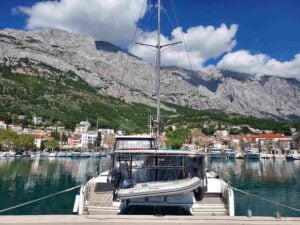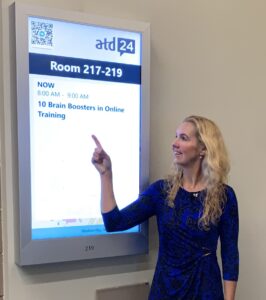After we spend the festivities of Christmas and the New Year in Edinburgh, it is time for us to sail further south. And Edinburgh is one of the last ports of Scotland, only 1 or 2 sailing days away, we will cross the border of England! After 2 months of Sailing in Scotland, we find it a bit hard to leave this beautiful country, with all the friendly people we have met: we just started to understand the Scottish language 😊.
We knew about the beautiful Scottish nature with cliffs, but the way the people were as a nation, was always a bit of a mystery to us, proud independent people we thought. And that’s true, but also very helpful, relaxed and comical! We learned a lot about the country. So as an ode to Scotland, here are 10 surprising facts:
1. Scottish don’t celebrate New Year’s Eve, they celebrate Hogmanay!
Hogmanay is the Scottish word for the last day of the old year, it’s celebrated big in Scotland, followed by celebration on the morning of New Year’s Day and the 2nd of January, which is a Scottish bank holiday. The origins of the word Hogmanay are unclear, but it may be derived from the Viking time (Norse) and Gaelic observances of the change of winterperiod. Most Scots celebrate New Year’s Eve with a special dinner, usually steak pie. Customs of Hogmanay are gift-giving, visiting the homes of family, friends and neighbours with special attention given to the “first-foot”, which is the first guest of the new year, usually immediately after midnight, which can bring good luck. Also the singing of ‘Auld Lang Syne’, a Scots poem by Robert Burns is common. People sing this in a circle, they have their arms linked, crossed over one another as the clock strikes midnight for New Year’s Day, though it is only intended that participants link arms at the beginning of the final verse, before rushing in to the centre as a group! The Edinburgh Hogmanay celebrations are among the largest in the world, with parades, festivals, music, markets, fireworks, etc.
2. Whiskey or Whisky?
When we walked in the streets of the Scottish cities, we often saw shops offering whisky tasting or whisky distilleries. And we noticed that whisky was spelled without the ‘e’. It turned out that whiskey is generally spelled ‘whiskey’ with an e, in the United states and Ireland. It is spelled whisky in Scotland and Canada.
3. Print your own Scottish banknotes!
We always like to have a little bit of cash with us, for instance to pay the harbor fee in little villages where they don’t have a ATM. That has happened now 3 times in 2 months. We noticed that Scotland has it’s own banknotes, Scottish pounds, it has the same value as British pounds and in the northern part of England, we can still use these Scottish bank notes. There are 3 National Banks that are allowed to issue Scottish pounds, so there are several different Scottish banknotes in circulation!
4. Nessie, the Monster of Loch Ness, has a sister: Morag!
Most people have heard of the Monster of lake Loch Ness, but there is another myth: Loch Morar is the deepest lake of Scotland, with depths of 300 meters and eyewitnesses have seen a snake like fish of 9 meters long, with brown skin, 3 big bumps that would have attacked fishermen. So another monster in Scotland.
5. The Unicorn of Scotland
The animal symbol for Scotland is the unicorn. When King Robert decided this in the 14th century, many people worldwide believed in the existence of unicorns. The Scots are famous for their rich culture filled with myths and superstition, so the unicorn was their animal of choice. The unicorn represents, according to the Celts, pureness, innocence and force. It’s also a proud animal that can not easily be tamed. England has the lion as a symbol, and what is one of the few animals that can beat a lion? Right, the unicorn!
6. Scotland has 3 languages
There are 5 million Scots and there are 3 languages: English, Scottish and Scots-Gaelic. About 1,5 million speak Scottish. It is an official language in Scotland, but is not officially recognized by the British government and Scotland is part of the United Kingdom. Gaelic is still spoken in the West of Scotland and in the Highlands.
7. Football has been forbidden
The Scottish National soccer team is famous for their hard battle and their talent for the game. But it wasn’t always a favorite and accepted sport in Scotland. It was forbidden to play by King James I in the Football Act of 1424. For a long time no one was allowed to play football. Luckily this Act fell into disuse and we can now enjoy the famous derby between the Rangers and Celtic in Scotland!
8. Golf is invented in Scotland, not the bagpipes!
Inventions from Scotland are the raincoat, the phone, golf and television. Golf has been played here since the 15th century and we notice many golf courses cycling through Scotland. But 2 things that are supposed to be originally from Scotland, are invented in other parts of the world! The bagpipes were seen 3000 years ago on the middle east and the Scottish Tartan was probably imported from Central Europe to Scotland.
9. Over 790 Scottish islands
We knew about the Shetland islands, but Scotland has many more islands, over 790, divided into different island groups, like the Orkney islands. Most of them are in the north east and north west of Scotland. Most of the islands are uninhabited.
10. The first apartment building were in Scotland
Not really skyscrapers, but already in the 16th century, people created apartment buildings in the streets. Especially in the streets called the Royal Mile in Edinburgh. It had to do with the fact that Edinburg grew rapidly in population, but was enclosed by a wall to protect the country from invaders (read: the English). So there was only one solution to accommodate people: build houses on top of each other (if you slept in the streets, you would have been punished, sometimes even hanged in those days). Usually the construction of these flats was not very stable: wood was used, but it rains a lot in Scotland. And Edinburgh is close to the salty sea, so rust and erosion made many apartment buildings collapse even quicker.










